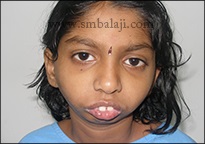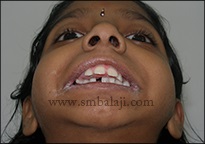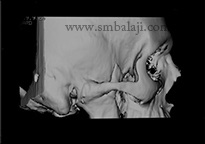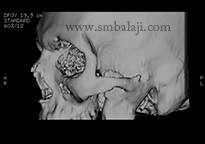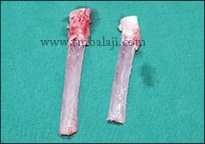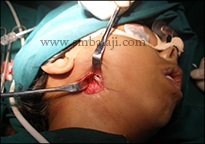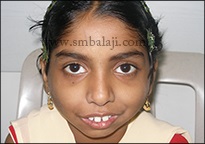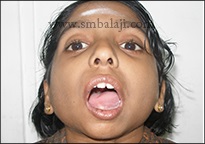TMJ Ankylosis | Stiff Jaw | Lock Jaw Correction
TMJ Ankylosis Surgery – A Comprehensive Guide
Temporomandibular joint (TMJ) ankylosis is a condition in which the jaw joint fuses, restricting jaw movement and mouth opening. It is most commonly caused by trauma or injury to the joint.
Surgery is the only way to treat TMJ ankylosis. Dr. S.M Balaji, a renowned maxillofacial surgeon in India, is a pioneer in TMJ ankylosis surgery. He specializes in gap arthroplasty with temporalis muscle interpositioning surgery, a procedure that involves removing the fused bone mass and repositioning a part of the temporalis muscle in the TMJ space.
In some cases, gap arthroplasty may be performed along with bone graft from the rib to reconstruct the TMJ joint. Dr. S.M Balaji is also an advocate of distraction osteogenesis, a recent advancement in maxillofacial surgery that can be used to reconstruct the TMJ and correct facial asymmetry in patients with TMJ ankylosis.
TMJ Ankylosis: Causes, Types, Symptoms, and Treatment
Temporomandibular joint (TMJ) ankylosis is a condition characterized by the immobility or fusion of the jaw joint, often resulting in a chronic, painless limitation of mandibular motion. This can make it difficult to eat, speak, and maintain oral hygiene.
Causes
TMJ ankylosis can be caused by a variety of factors, including:
- Trauma: A blow to the jaw or face can damage the joint and lead to ankylosis.
- Infection: An infection of the jaw joint can also lead to ankylosis.
- Failed surgery: Surgery on the TMJ can sometimes lead to ankylosis, especially if the surgery is not performed properly.
- Rheumatoid arthritis: This autoimmune disease can cause inflammation and damage to the TMJ, which can lead to ankylosis.
- Congenital: In rare cases, TMJ ankylosis can be present at birth (congenital).
Types
There are three main types of TMJ ankylosis:
- False ankylosis: This is the least common type of TMJ ankylosis. It is caused by a non-bony obstruction in the joint, such as scar tissue or a foreign body.
- Fibrous ankylosis: This type of TMJ ankylosis is caused by the formation of fibrous tissue in the joint. Fibrous tissue is tough and inflexible, which can limit joint movement.
- Bony ankylosis: This is the most common type of TMJ ankylosis. It is caused by the formation of bone between the joint surfaces. This can completely fuse the joint, making it impossible to open the mouth.
Symptoms
The main symptom of TMJ ankylosis is limited mouth opening. This can range from mild to severe. In severe cases, the mouth may be unable to open more than a few millimeters.
Other symptoms of TMJ ankylosis may include:
- Difficulty chewing
- Difficulty speaking
- Difficulty swallowing
- Facial pain
- Facial asymmetry
Treatment
The treatment for TMJ ankylosis depends on the type and severity of the condition.
- False ankylosis: Treatment for false ankylosis typically involves removing the obstruction in the joint. This can be done through surgery or by physical therapy.
- Fibrous ankylosis: Treatment for fibrous ankylosis typically involves surgery to remove the fibrous tissue and restore joint movement.
- Bony ankylosis: Treatment for bony ankylosis typically involves surgery to break the fused bone and restore joint movement.
In some cases, joint replacement surgery may be necessary.
If you are experiencing symptoms of TMJ ankylosis, it is important to see a doctor or dentist for diagnosis and treatment.
Early diagnosis and treatment of TMJ ankylosis can help to improve the outcome and reduce the risk of complications.

